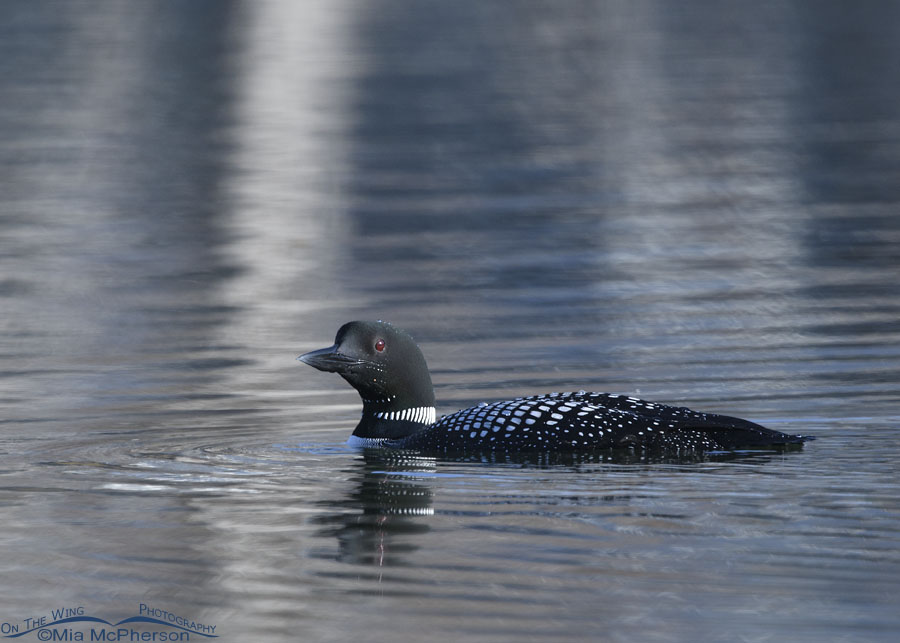World Migratory Bird Day is observed on the second Saturday of May every year to promote the significance of preserving migratory birds and their habitats. The theme for World Migratory Bird Day 2023 is “Water: Sustaining Bird Life”. This day also aims to highlight the threats that migratory birds face, such as climate change, habitat loss, pollution, and collisions with human-made structures.
Focus On Water:
Water is a crucial resource for birds, as they rely on it for many aspects of their lives, such as drinking, bathing, and finding food. Birds also depend on water bodies for breeding and nesting, and many species migrate to follow water sources. However, many water bodies around the world are facing threats such as pollution, damming, and water overuse, which can have severe impacts on bird populations.
 Common Loon on spring migration – Nikon D500, tripod mounted, f8, 1/1000, ISO 640, Nikkor 500mm VR with 1.4x TC, natural light
Common Loon on spring migration – Nikon D500, tripod mounted, f8, 1/1000, ISO 640, Nikkor 500mm VR with 1.4x TC, natural light
Common Loons (Gavia immer) are an excellent example of a bird species that depends heavily on water for its survival. These large, iconic birds are found across North America and are known for their haunting calls and striking black-and-white plumage. During the breeding season, common loons inhabit freshwater lakes, ponds, and marshes, where they build nests on the shore or on floating vegetation. The nests are usually made of plant material and are anchored to the bottom of the water body.
Loons feed mainly on fish, which they catch by diving underwater and using their powerful webbed feet to swim after their prey. They can dive to depths of up to 200 feet and can stay underwater for several minutes. However, loons are vulnerable to pollution and changes in water quality, as they can accumulate toxins such as mercury and pesticides in their bodies through the fish they eat.
Climate Change:
Climate change also poses a significant threat to common loons and other migratory birds. Rising temperatures and changing precipitation patterns can alter the timing and availability of food sources, affecting breeding success and survival rates. Furthermore, changes in water levels and temperatures can also impact the quality and quantity of suitable nesting and feeding habitats.
World Migratory Bird Day provides an important opportunity to raise awareness about the critical role that water plays in the lives of migratory birds and the threats that they face. By protecting and conserving water bodies and their associated habitats, we can ensure the survival of species like the common loon and maintain healthy ecosystems for future generations.
We need to use water wisely. For the birds. For us. For the planet.
Life is good. We can make it better by doing better.
Mia
Click here to see more of my Common Loon photos plus facts and information about this species.


Very nice, the loons were so enjoyable this year. Our natural habitat is so important to everything, even humans, but being devoured by “progress”.
Beautiful Loon shot! I’m hoping we’ll learn before it’s too late, but I’m not optimistic.
What a wonderful shot. The Loon’s eye, the light and the broken reflection…it all works. Thanks Mia.
I wish. How I wish. Sadly I think that this day will only be marked by those who are already concerned.
Thank you for your posts on stewardship of our beautiful planet, its magnificent occupants & their habitat, Mia!
Always learn something…always something to learn about how we can do better.
Thanks so much for this info about the habits of the common loon and the effects of climate change on human and bird life.—Jeri